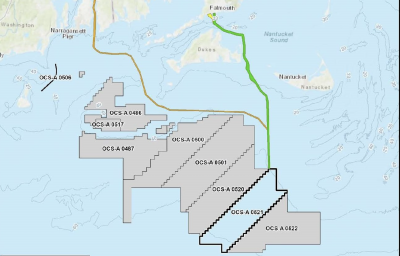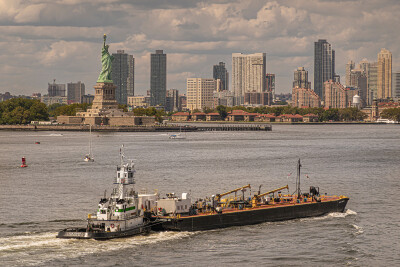Offshore wind energy developer Equinor has deployed a high-tech buoy to gather data to help design the Empire Wind turbine array near the approaches to New York Harbor.
The buoy carries a FLiDAR (floating light detection and ranging) system, using laser technology to measure wind direction and speed, wave conditions and other weather and oceanographic conditions over the next two years.
The buoy was launched in New York Harbor and towed to the Empire Wind site, a 79,350-acre federal lease that Norway-based Equinor (formerly Statoil) acquired in 2016. It is the latest in a series of data collection projects, from Martha’s Vineyard off Massachusetts to the New Jersey coast, as developers work on designing turbine arrays.
“The deployment of this specialized buoy marks another step forward in the multi-year process of bringing a reliable source of renewable energy to the New York-New Jersey area,” said Christer af Geijerstam, president of Equinor Wind US, which is developing Empire Wind and the planned Boardwalk Wind project off New Jersey.
“Offshore wind power today is made possible by a host of innovative technologies, from larger and more efficient turbines to sophisticated LiDAR systems like this that enable us to gauge invaluable information about the characteristics of this offshore lease area.”
“The FLiDAR itself is an example of renewable energy innovation,” said af Geijerstam said. The buoy is powered by small wind turbines and solar panels that charge its battery banks, so the system can operate autonomously throughout a full winter season offshore from New York, he said.
“Access to good quality wind recordings like those provided by the FLiDAR system is essential to the development of any wind energy project today,” said af Geijerstam. “It’s yet another example of the technological innovation that Equinor is bringing to offshore wind development in New York.”
Equinor’s latest lease acquisition was a successful bid of $135 million In December 2018 for one of three areas south of Massachusetts that were offered by the federal Bureau of Ocean Energy Management. The bid was more than three times as much that Equinor paid for its Empire Wind tract, a signal of escalating interest in the U.S. offshore wind industry, according to BOEM officials.
The company says its leases now are “within reach of some of the most important markets for offshore wind in the U.S., with the potential to provide over two million homes with clean, renewable power.”





